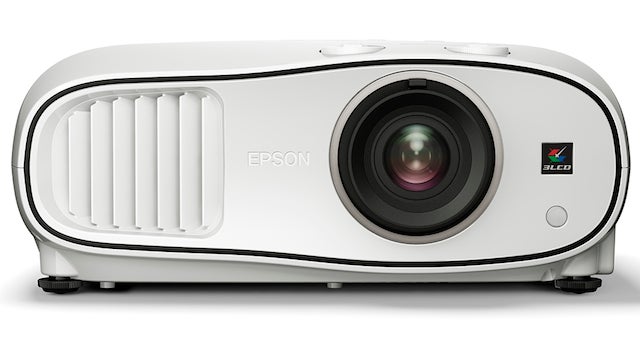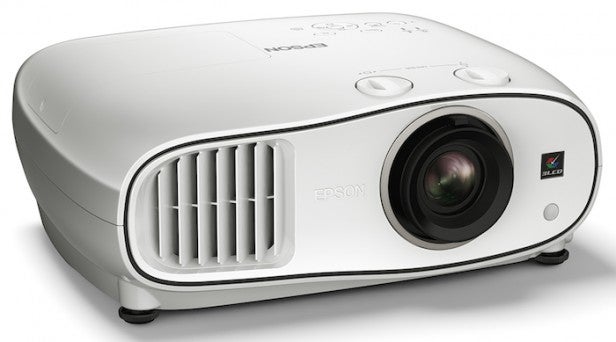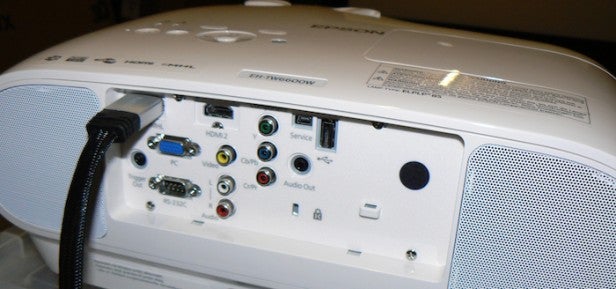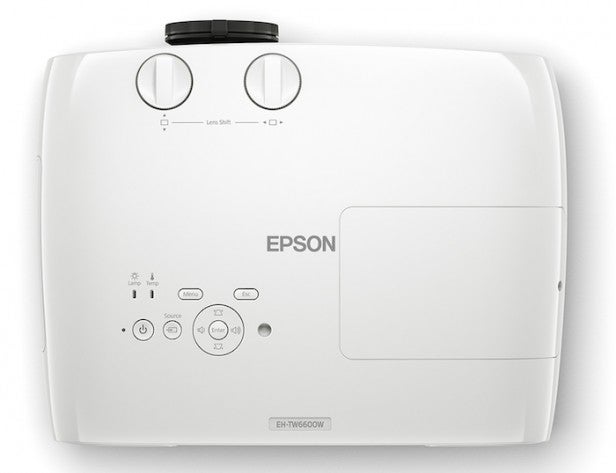Epson EH-TW6600W Review
Epson EH-TW6600W
A solid mid-range LCD projector that excels with 3D

Sections
- Page 1 Epson EH-TW6600W Review
- Page 2 Image Quality Review
- Page 3 3D, Gaming Performance and Verdict Review
Verdict
Pros
- Wireless HDMI system works well
- Bright, colourful, detailed pictures
- 3D looks fantastic
Cons
- Black levels aren't great
- Slight clicking noise from dynamic iris
- Wireless HDMI system adds quite a lot to the cost
Key Specifications
- Review Price: £1700.00
- Full HD LCD projector
- Active 3D playback (1 pair of glasses included)
- 70000:1 claimed contrast ratio via dynamic iris
- 2500 Lumens max light output
- Wireless HDMI connectivity
What is the Epson EH-TW6600W?
The TW6600W is a new LCD projector from Epson, designed to up the spec of last year’s TW6100W without significantly upping the price. Key features include Wireless HDMI connectivity, 3D playback, extensive colour-calibration tools and a dynamic iris system that will hopefully run a bit more quietly than the TW6100’s did!
Epson EH-TW6600W – Design and Features
For the first time in an age Epson’s substantially altered the design of its home cinema projectors. Gone is the usual centrally mounted lens and startlingly wide shape; in is a strikingly asymmetrical shape featuring a bulge on the right-hand side wrapped around an off-centre lens with all the on-unit buttons, and two lens-adjustment ‘wheels’ also sitting over to the right of the top edge. The only things on the left side are a subtly designed vent on the front edge and a cover on the top for accessing the projector’s lamp bay.
Connections on the main projector body comprise two HDMIs, component video input, a composite video input, a VGA input, an RS-232 port for system integration, two USBs, and a stereo mini jack audio output if you want to pass audio received via the HDMIs to an external audio system.
The most interesting element of the TW6600W’s connectivity, though, comes from the wireless HDMI transmitter that accompanies it. This provides four HDMI inputs for connecting multiple sources – a great improvement on the twin HDMIs most projectors are limited to – plus a single HDMI output if you want to hardwire the transmitter to a video device for some reason, and a USB output provided as a convenient way of charging up the single pair of 3D glasses you get free with the TW6600W.
It’s great to find, too, that one of the HDMIs supports the MHL protocol for easy playback of content stored on mobile devices.
Handily the receiver end of the Wireless HDMI system is built into the projector’s chassis rather than requiring an external box, and the connection process is engagingly effortless. You just switch the transmitter on, having connected your stuff to it, and then choose the wireless connection from the projector’s menus. Full HD and HD 3D are both supported via the wireless engine, by the way.
Turning to the TW6600W’s imaging specification, it is, of course, a Full HD projector built using an LCD optical system – as usual with Epson. It claims a dynamic contrast ratio of 70,000:1, and a high brightness for its £1700 price level of 2500 Lumens. These figures compare with 40,000:1 and 2300 respectively on last year’s TW6100W.

It’s worth stressing, too, that the TW6600W’s light output remains the same with both white and coloured content. Unlike single-chip DLP projectors, which use a colour wheel, there’s no reduction in light output when showing colour on Epson’s ‘3LCD’ designs.
Other features of note include a crosstalk-reducing 480Hz drive for 3D viewing, the way the 3D transmitter is built into the projector’s body, a range of picture presets including living room and cinema modes, an intriguing Auto Colour Optimiser, Epson’s Super Resolution processing for making images look sharper and more detailed, and a built-in stereo audio system.
As we’ve said many times before, putting speakers in a projector is hardly an ideal option, given that these speakers inevitably end up sitting some distance from the screen, so that the sound they produce sounds dislocated from the action. However, it’s also often not convenient to have to find a separate audio system to run with a projector. So it’s nice to find that Epson seems to have taken the potential audio duties of the TW6600W surprisingly seriously, employing a stereo speaker system capable of thumping out a claimed 20W of power.
Epson EH-TW6600W – Setup
The TW6600W is unusually easy to get up and running. The wheels on its top edge enable you to optically shift the TW6600W’s images left, right, up and down over a decently wide range, making it simple to get images correctly positioned on your screen – or even, potentially, in the right place on your wall. The zoom ring around the TW6600W’s lens delivers a healthy 1.6x zoom, and there are simple screw-down legs to help you correct for any slight slopes your floor or stand might suffer.
Fine tuning the TW6600W’s pictures via its onscreen menus can be as involved a process as you want it to be. Although if you’re not a confident tinkerer, there’s a reasonable array of picture presets (‘Colour Modes’) available, including a new Auto setting that seemed decently effective in some ways during our tests. Its only problems are, firstly, that with grainy films the Auto colour mode did tend to make the grain look a bit unnatural, and secondly, that you’re given practically zero say in how the Auto mode impacts pictures. 
The non-auto picture presets let you fine tune pretty much anything, though, from gamma and white balance controls through to in-depth colour management, noise reduction, and whether the video processing engine is optimised for speed or precision. You can also change the degree to which Epson’s Super Resolution engine – which boosts the image’s sharpness and apparent ‘pixel density’ – is in play.
The only things we’d definitely recommend about the settings are never using Super Resolution higher than its ‘1’ level, to stop images looking noisy or stressy; never using noise reduction unless you’re watching standard definition; and leaving the auto iris on either its Fast setting or, for reasons we’ll get into later, turning it off.

